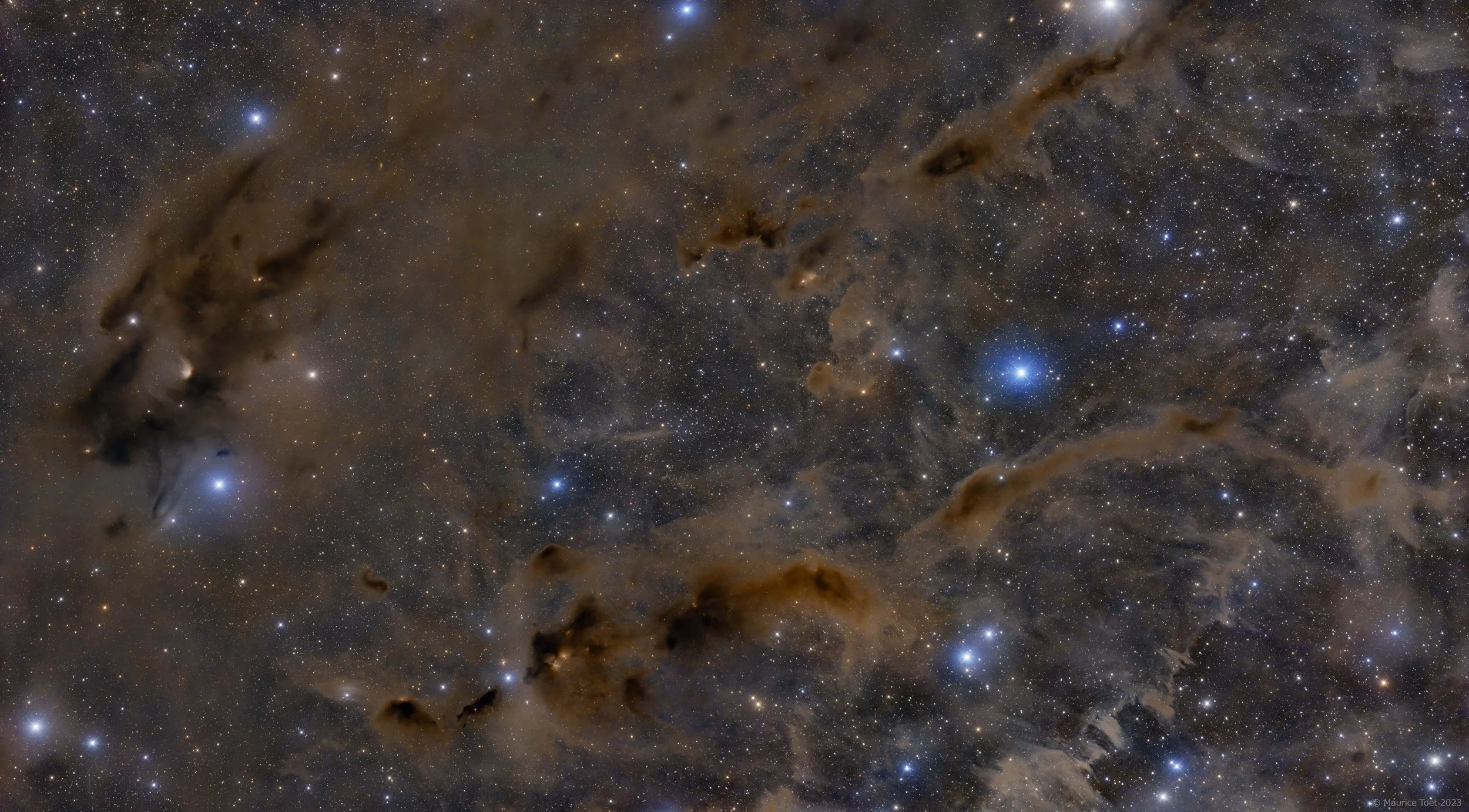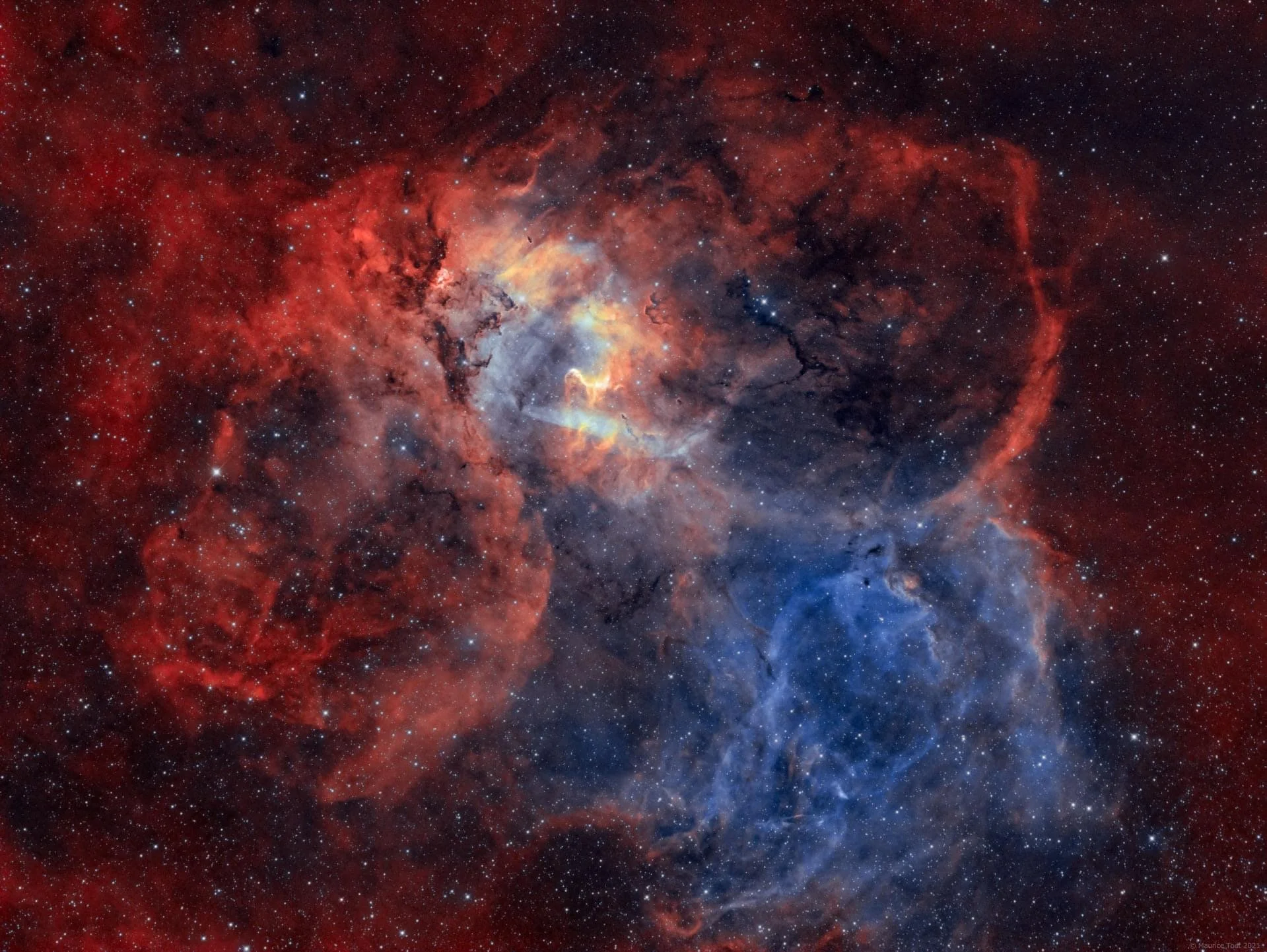
AAPOD2 Image Archives
Sort 2025 By Month: January | February | March | April | May | June | July | August | September | October | November | December
Taurus Molecular Cloud (TMC-1)
TMC-1, or the Taurus Molecular Cloud-1, is a dense interstellar cloud located in the constellation Taurus. This cold and dark molecular cloud is of particular interest to astronomers as it represents an environment where new stars may eventually form. TMC-1 is known for its rich abundance of molecular compounds, including carbon-bearing molecules such as carbon monoxide (CO) and carbon dioxide (CO2), as well as organic molecules like cyanopolyynes.
The study of TMC-1 provides valuable insights into the initial conditions and processes that govern star formation within molecular clouds. By analyzing the chemical composition and physical properties of TMC-1, researchers can better understand the intricate interplay between gravity, magnetic fields, and turbulence, which ultimately lead to the gravitational collapse and birth of new stars. TMC-1 serves as a natural laboratory for studying the early stages of stellar evolution and the complex chemistry that underlies the formation of planetary systems and the building blocks of life in the cosmos.
Sh2-132 Lion Nebula
About two weeks ago, I processed a monochrome Hα image of this interesting object on the border of Cepheus and Lacerta. Last Monday the sky unexpectedly cleared. I decided to spend the night on acquiring OIII data to create an Hα-OIII-OIII false colour image, where Hα is assigned to the red channel, OIII to the blue channel and a mix of Hα and OIII to the green channel. Although it stayed clear all night, I only used the images captured before midnight. In the area in the Netherlands where I live, the sky severely brightens from midnight to dawn because horticulturalists are then allowed to ignite assimilation lights. Although the used OIII filter has a bandwidth of only 4nm, the light pollution caused by the glasshouse horticulture severely affects the quality (signal-to-noise ratio) of the images. I'll post a separate message to illustrate the difference in sky quality before and after midnight.
What's striking in (false) colour images of this object, is the conical beam that crosses in front of nebulas in the background. Here this beam has a cyan hue in front of yellow/orange nebulas.
Exposure time: 16 hours, 10 minutes (141x 300" Hα, 53x 300" OIII) | Optics: Takahashi ε-180ED f/2.8 | Camera: ZWO ASI294MM Pro (B 2x2, G 120, T -15 °C) | Acquisition: ZWO ASIair Pro | Filters: Baader Planetarium Ultra-Highspeed | Mount: Astro-Physics Mach1 GTO | Location: Zoetermeer, Netherlands | Date: 27 & 28 October and 8 November 2021
Pre-processing in Astro Pixel Processor, post-processing in Adobe Photoshop.
Copyright: Maurice Toet



